Independent eating habits in a baby is a natural way for him to understand cues for his hunger and fullness.
But unfortunately for a lot of babies, they always have someone waiting on them hand and foot. A doting dadaji (grandfather), an over-indulgent dadima (grandmother), naniji and nanaji (maternal grandmother and grandfather) being proxy for the grandparents/parents, or else, the omnipresent moms who have the miraculously ability to do everrrrything for their children!!! So you see, most often than not, our kids are fed. In our attempt to get the job done, we are denying our children the accomplishment of a major skill. The skill to develop independent eating habits!
“How do I get my baby/toddler to eat independently?” This is a hugely daunting question for most moms. Don’t worry! Your baby will show you signs. Signs that holler to us “Mom I wanna eat on my own!” Acknowledge these.
My son Ruhaan has a very dynamic independent streak. Having accomplished it very successfully with my first born, I couldn’t wait to get it started with my daughter. Touching food of different textures, temperatures, smelling it, toying around with the spoon and hearing it clink on the plate; these are all a part of her learning experiences.
Is it messy? Oh yes! Leaving her with food in front of her is a definite beckoning of a floor splattered with food, clothes being a canvas for eatables, some food mush play and a face that mirrors one that has been dunked into everything on the plate! But every meal is an opportunity for parents to help their babies explore and inculcate a healthy relationship with food. And once you’ve managed to maneuver past these messy premonitions, life is smoother.
Mother-O-Pedia’s Two Cents- At meal times I spread an old king sized bed sheet beneath the chair that has the baby’s booster strapped on. This cuts down the cleaning time majorly since I only have to dust it daily and wash it after a few uses. Also I have gotten chair covers made for the dining chairs. Now I’m not worried about stained and blotched upholstery!
How do I know he is ready?
- Once your baby is sitting comfortably
- Grasps things between the finger and forefingers
- Guides things into his mouth
- Make’s an attempt to chew
- Plays with a spoon
How do I begin?
When your child moves from exclusively being milk fed to semi-solids, it is usually what is called the transitional period. By the time your baby reaches 8 months a few teeth may be peeping and she may be making some feeble attempt at chewing. I’d say this is a good time to hand him a few finger foods. Begin with food that will not break easily into pieces in the mouth (kids have narrow wind pipes and we don’t want any choking hazards.)
Good choices for finger foods: vermicelli, wheat pasta, soft ripe fruits, soft boiled vegetables, cheese slices, puffs, cheerios, puffed rice.
Bad choices for finger foods: Nuts and dry fruits, raw vegetables like carrots, cucumbers, small food like peas, raisins, grapes.
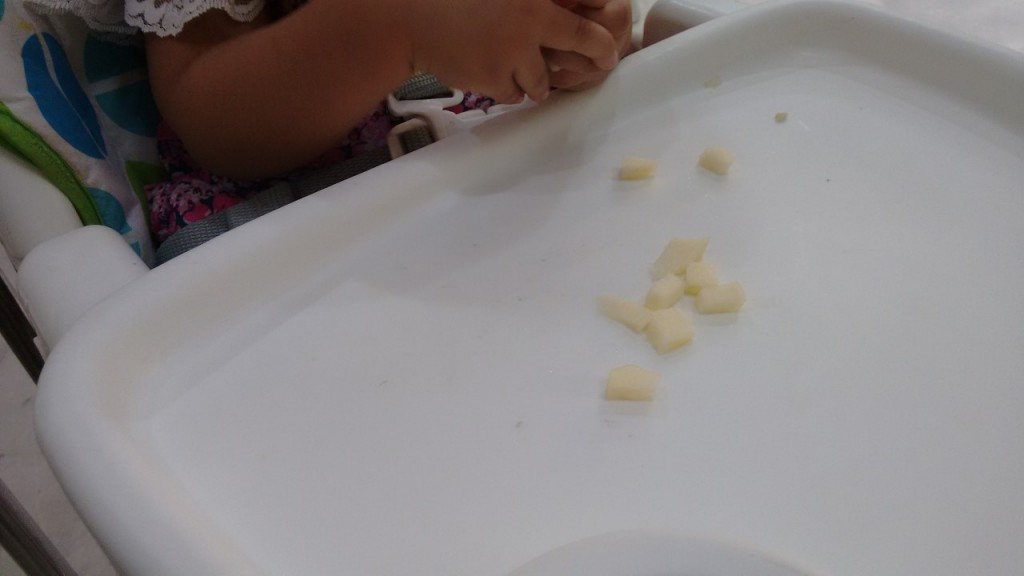
It’s apple for breakfast today!!
What can I do to help him?
Plenty. Begin with allowing her to make a mess. Allow her and opportunity to try. Don’t do for her what she can do for herself. Kids are usually motivated to explore things with their mouths and will most certainly try eating. Bigger things that are not very hard will be good to begin with. You may notice sometimes that as opposed to the ideal way of picking (pincer grip) between the index finger and the thumb, the baby is almost grabbing everything with his palm and trying to stuff it in his mouth. It is ok. Reduce the amount of food in front of the baby, restricting it to a few pieces. Also encourage him to hold things by handing it out to him with your own demonstration of a pincer grip.
Eating with a spoon
Inaaya, is now getting acquainted with a spoon. I let her have an extra one in her hand while I feed her. She’s now gotten the hang of holding it and chewing on it. Since the past few days we have started dipping it slightly in the food that she’s eating. Some cheese sauce, thick cooked lentils, porridge or hung yogurt. (I still feed her the more runny liquids) She licks it, then throws it, and asks for it back. But she’s learning. There’s food in her hair, in her eyes, on her neck and her clothes and everything in her periphery. This part can be really discouraging and on the onset of every meal, I am always worried about the impeding disaster. But then again, this part of growing up (eating independently) has to be hands-on training.
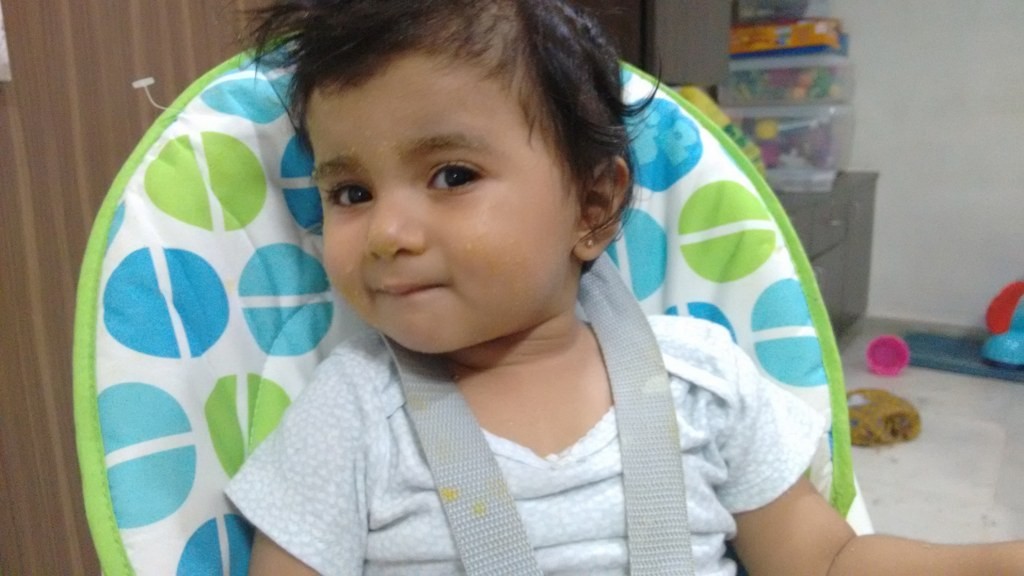
Look who just got herself a food spa!
Be prepared to step in and help your child when you notice he is struggling. Hold his hand and guide it towards his mouth. Sharing his meal time and showing him how it is done, is a great way for your child to learn. Model it and kids learn really quickly. Ruhaan was an independent eater by the time he was 3. Inaaya’s learning faster because she and her older brother share their meal times. She loves aping!
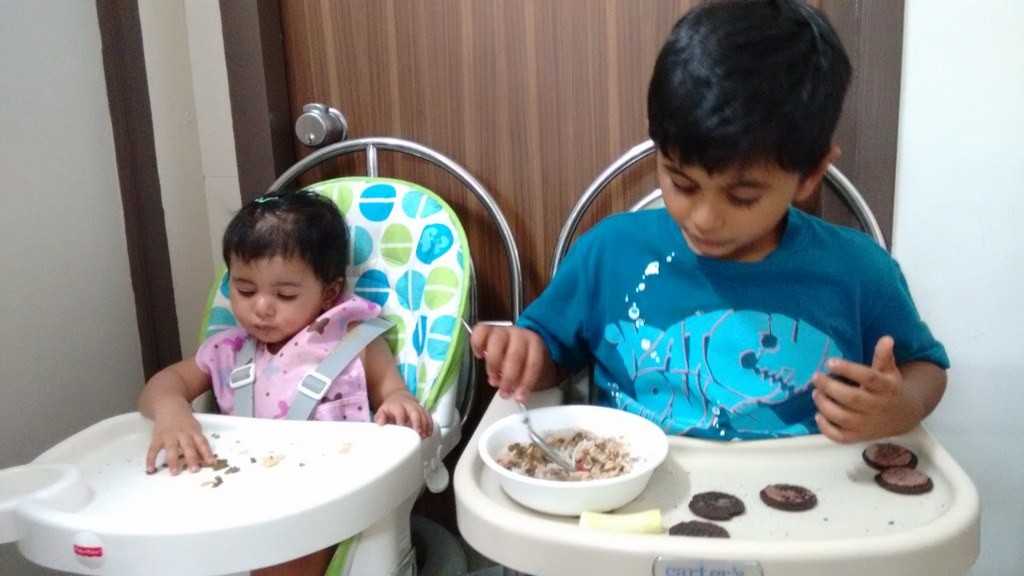
Bother and sister sharing a cocktail of food…green beans, rice, lentils and oh! what’s that?! Oreos??!
I also don’t believe that there are any ergonomic utensils that can mess-proof this process. The best thing is to be prepared, and go with the flow.
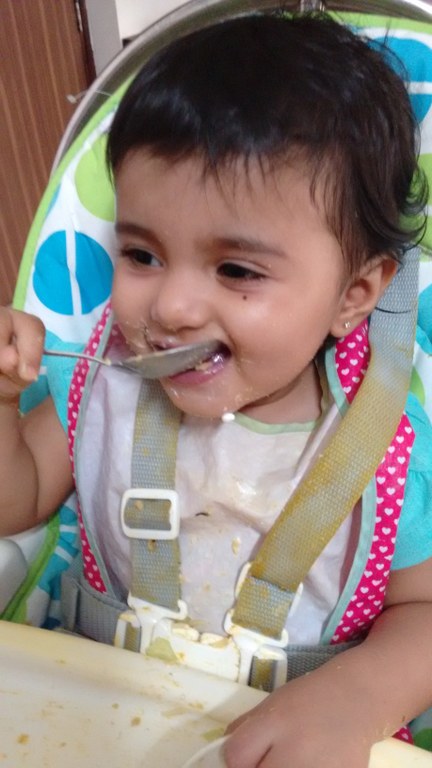
Teaching your child to eat independently is a long journey. And it can be quite frustrating. But once your child has learnt to be an independent eater, things will certainly lighten up for you.
Mommy’s Food For Thought: Let them make a mess. They will be little only for a while.

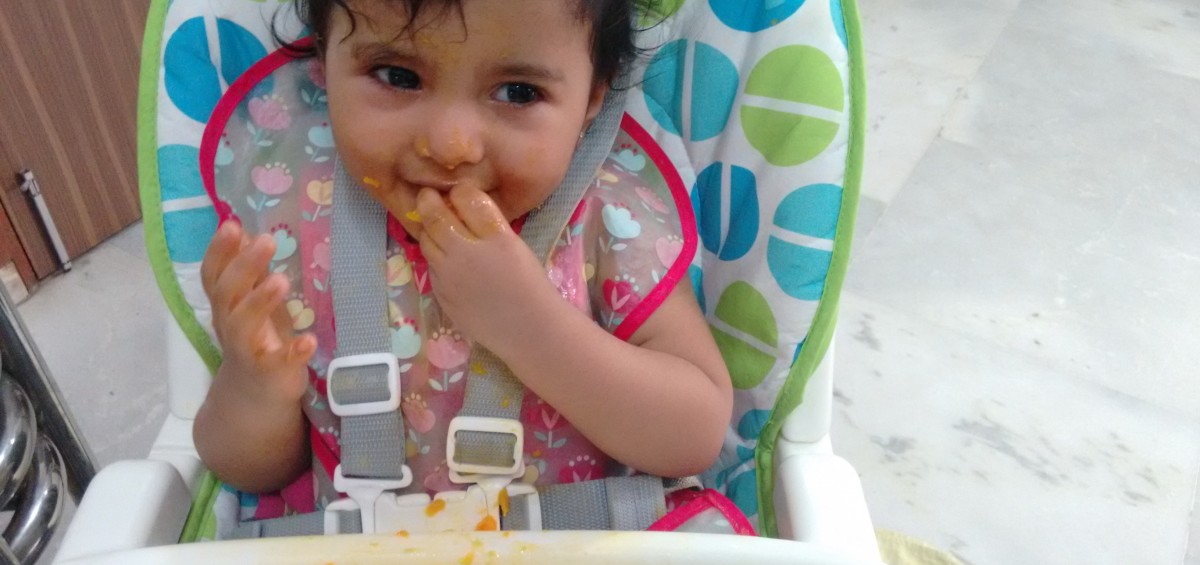

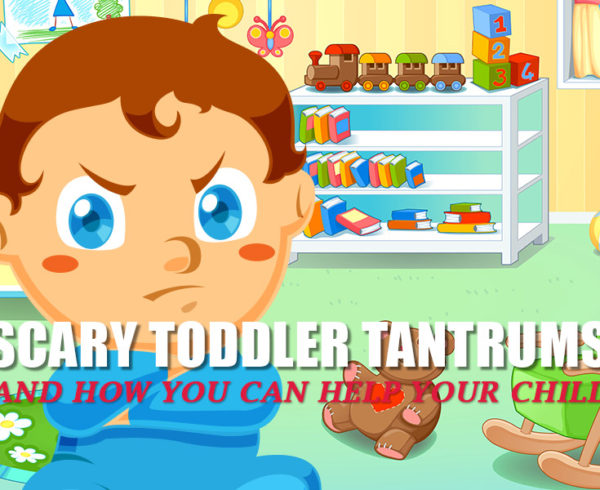
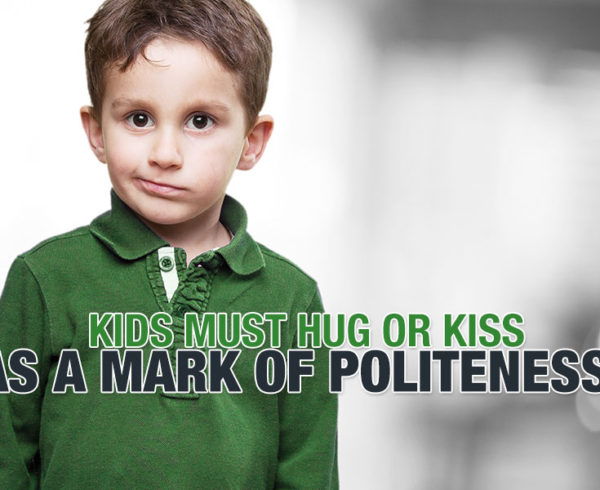
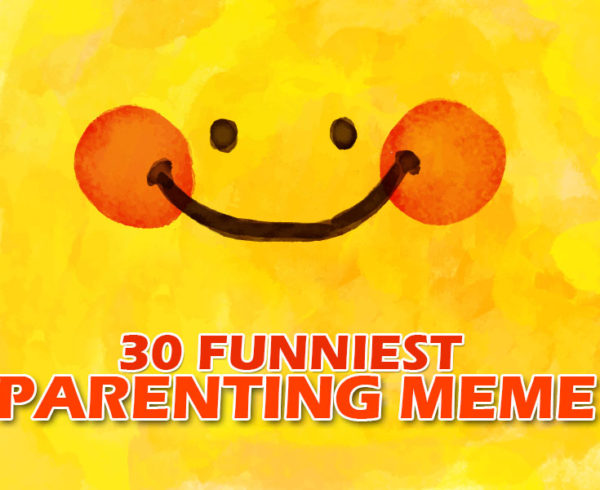

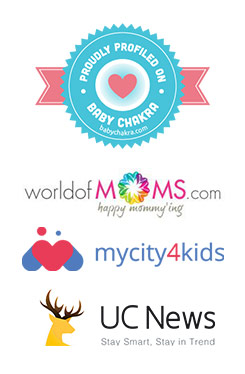
Leave a Comment